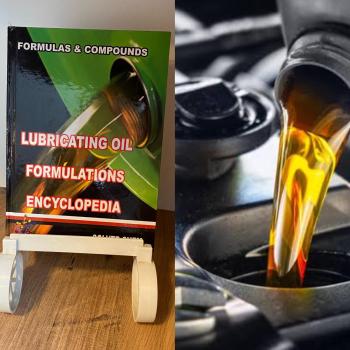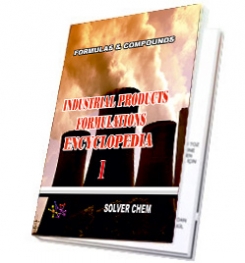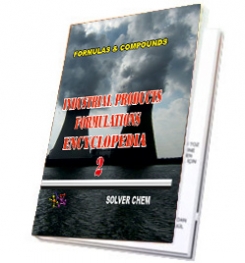
Base Oils
Lubricants have been around since ancient times. The Petroleum-based Lubricants business started in mid 1800’s. The initial processing was limited to separation by boiling point. Most people know the key driver of the production for lubricants are Base Oils.
Mineral Base Oil
Modern mineral base oils are the result of a long and complex distillation and refining processes. The feedstock used is crude oil. This substance is not of uniform quality but consists of several thousands of hydrocarbon compounds in which the elements carbon and hydrogen are present in all molecules and, in part, are bound to other elements.
The hydrocarbons can be divided into three main groups: paraffinic, naphthenic and aromatic.
Paraffinic hydrocarbons can be further divided into two subgroups: normal paraffinic and isoparaffinic.
Paraffinic hydrocarbons are the best lubricants. The distillation process in the refinery separates the hydrocarbons contained in the crude into cuts based on the molecule size.
Furthermore, as many unwanted substances as possible are removed in the process, such as sulphur, aromatic hydrocarbons, paraffin wax, etc. In other words the mineral oil production process is physical cleaning and the end product is so-called paraffinic base oil.
Most of the hydrocarbons in the base oil are paraffinic, but it also contains naphthenic and aromatic molecules. When the finished lubricant, such as motor oil, is made of these, several additive compounds are used to improve the base oil properties.
The final outcome can also be so-called naphthenic base oil, where most of the hydrocarbons are naphthenic. Their cold properties are excellent.
EHVI and VHVI base oils
VHVI (Very High Viscosity Index) oil, produced from crude oil using special processes, can be made to have properties close to those of synthetic oils. Raw material of the VHVI base oil is paraffinic hydrocracking fraction which is improved by removing waxes using the solvent extraction method.
The use of these base oils as components of modern motor oils is increasing, due to engine constructions that are more demanding in terms of lower emission properties and the new quality requirements of vehicle manufacturers.
Synthetic Base Oil
The group of synthetic base oils covers many different substances: synthetic hydrocarbons, organic esters, polyalkyline glycols, etc. Common to synthetic base oils is their production by a chemical process.
Synthetic PAO (Polyalphaolefine) hydrocarbons are manufactured in a process that results in isoparaffins, the desired types of hydrocarbon molecules. The raw material used is reprocessed into ethene gas (C2H4).
It is thus possible to produce the best possible lubricating oil, which entirely lacks the unwanted components, through chemical processes. This is the most commonly used synthetic base oil in modern engine lubricants.
Additives
At the production stage, the base oils for lubricants have gone through many quality-improving and cleaning stages that contribute to the properties required in future use. Additives can also improve the oil's cold properties, viscosity index and oxidation resistance, to enhance corrosion, pressure and wear resistance, and to prevent foaming.
In addition, the cleaning additives used in modern engine oils keep the pistons and inner parts of the engine clean of carbon and sludge deposits that tend to form impurities and high operating temperatures.
Base Oil Market selection:
As you understand from the above article there are different kind of Base Oils. Base Oil Market will focus on the five types of Base Oil according to API (American Petroleum Institute)
Group Viscosity Index Saturates Sulphur in % Description
I 80-120 < 90% > 0.03% Conventional (Solvents)
II 80-120 = 90% = 0.03% Requires Hydroprocessing
III >120 = 90% = 0.03% Requires severe Hydroprocessing, often special feedstocks
IV --- PolyAlphaOlefins (PAO)
V --- All other basestocks not in Group I – IV including other synthetics
Note that the base oil group category is followed by the manufacturing method (in bold print) and then a description of the oil characteristics for each category.
There are five specific categories of base oils. These categories define the type of base stock the oil is formulated from. The categories are as follows. Note that the base oil group category is followed by the manufacturing method (in bold print) and then a description of the oil characteristics for each category.
Group I - Solvent Freezing: Group 1 base oils are the least refined of all the groups. They are usually a mix of different hydrocarbon chains with little or no uniformity. While some automotive oils on the market use Group I stocks, they are generally used in less demanding applications (hh).
Group II - Hydro processing and Refining: Group II base oils are common in mineral based motor oils currently available on the market. They have fair to good performance in lubricating properties such as volatility, oxidative stability and flash/fire points. They have only fair performance in areas such as pour point, cold crank viscosity and extreme pressure wear (hh).
Group – III Hydro processing and Refining: Group III base oils are subjected to the highest level of mineral oil refining of the base oil groups. Although they are not chemically engineered, they offer good performance in a wide range of attributes as well as good molecular uniformity and stability. They are commonly mixed with additives and marketed as synthetic or semi-synthetic products. Group III base oils have become more common in America in the last decade (hh).
Group IV -Chemical Reactions: Group IV base oils are chemically engineered synthetic base stocks.
Polyalphaolefins (PAO's) are a common example of a synthetic base stock. Synthetics, when combined with additives, offer excellent performance over a wide range of lubricating properties. They have very stable chemical compositions and highly uniform molecular chains. Group IV base oils are becoming more common in synthetic and synthetic-blend products for automotive and industrial applications (hh).
Group V - As Indicated: Group V base oils are used primarily in the creation of oil additives. Esters and polyolesters are both common Group V base oils used in the formulation of oil additives. Group V oils are generally not used as base oils themselves, but add beneficial properties to other base oils (hh).
Note that the additives referred to in the Group V description are not aftermarket type oil additives. The additives referred to are used in the chemical engineering and blending of motor oils and other lubricating oils by the specific oil company that produces the finished product.
Base stocks
Are called by several names: Neutrals (100N, 150N, 600N, …), Bright Stocks, Grades (SAE 5, 10…; ISO 22, 32..). The most common names are for group I (SN: Solvent Neutral), for group II (N: Neutrals) and group III grade names refer to the viscosity (4cst, 6cst, 8cst …). Grade names can also refer to trademarks.
Group Viscosity Index Saturates Sulphur in % Description
I 80-120 < 90% > 0.03% Conventional (Solvents)
II 80-120 = 90% = 0.03% Requires Hydroprocessing
III >120 = 90% = 0.03% Requires severe Hydroprocessing, often special feedstocks
IV --- PolyAlphaOlefins (PAO)
V --- All other basestocks not in Group I – IV including other synthetics
TAGS : WHAT IS BASE OILS,USING OF BASE OILS,BASE OILS TYPES,BASE OILS MSDS,WHERE TO USE BASE OILS,FORMULAS OF GREASE OILS,FORMULATION OF LUBRICANTS,LUBRICANTS MANUFACTURING PROCESS,PRODUCTION MOTOR OILS,MAKING MOTOR OILS,USE BASE OILS IN MOTOR OILS.HOW TO USE BASE OIL,HEAVY NEUTRAL BASE OIL USING,LIGHT NEUTRAL BASE OIL MAKING,FORMULA,FORMULAS,HOW TO COMPOUND OF ENGINE OILS.
SOLVER CHEM

|
|

|
|

|
|

